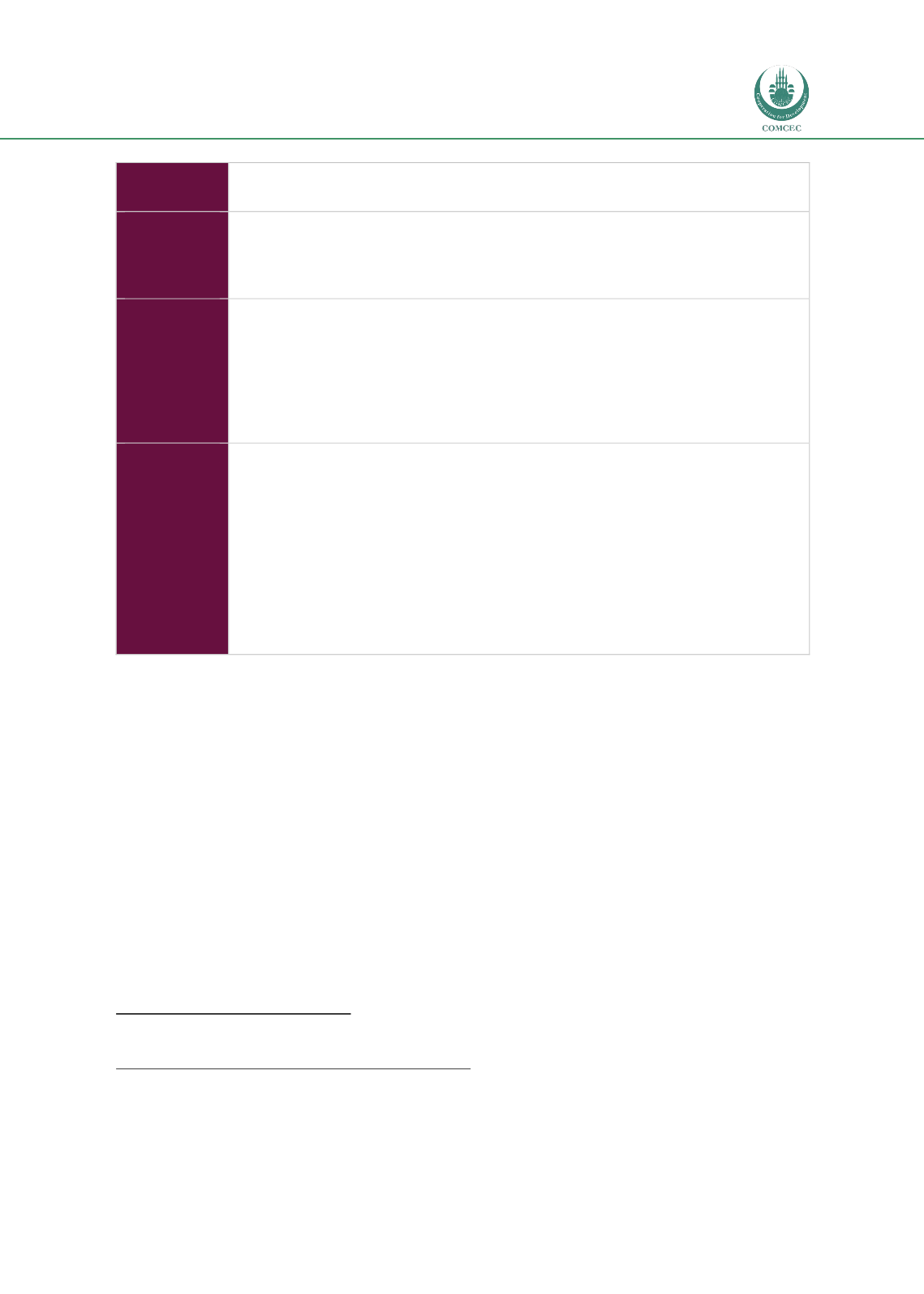

Improving Institutional Capacity:
Strengthening Farmer Organizations in the OIC Member Countries
79
Purpose
CACVRA’s focus is producing premium organic coffee and cocoa for export to the
US and EU, certified according to Fair Trade standards.
Footprint
and
Membership
profile
CACVRA is a local organization based in the Ayacucho region, in the Andes
highlands of South Central Peru. It currently consists of ~2,700 small-scale
coffee- and cocoa-growing members of both genders.
Service
provision
CACVRA functions primarily as a marketing organization, investing in
transportation, storage, and primary processing (i.e. hulling and drying) assets
for its members, and organizing certification under the Fair Trade scheme, which
allows its members to earn premiums over standard prices. Through these
premiums, it has been able to offer additional services to members, including
women’s empowerment programs (exchanges and workshops with other
women’s organizations in Peru) and community educational programs.
115
Business
model
CACVRA is a co-operative producers’ organization, which means it earns revenue
directly from selling products produced by its members. It sells 100% of its
coffee and cocoa through the Fair Trade certification scheme to the US and the
EU, including to businesses such as Starbucks
116
, which enables it to earn a Fair
Trade premium above standard market prices. This premium is invested in ways
chosen by the membership, often educational, social, and environmental
programs.
CACVRA also maintains a small-scale processing and packaging plant employing
30 people and in 2013 obtained a trademark for the “Coffee CACVRA” brand
117
,
allowing it to capture more of the final value of the coffee it produces.
Results and challenges
CACVRA faced a very significant challenge in the 1980s when agriculture was disrupted
throughout the Andean highlands. From near-collapse, the organization has quite successfully
regained stability and strength, recording strong growth in the past decade. It reached 1,600
members in the early 2000s and more than 2,700 by 2011. Given the often short lifespan of
small-scale cooperatives, this growth and longevity is a notable success.
CACVRA has also been successful at moving upmarket into higher-value products,
transitioning from standard-grade coffee in the 1970s to organic, certified coffee – which was
recognized as one of the top 4 Peruvian coffees in 2011.
118
In addition, CACVRA has also
diversified, adding cocoa production to its mandate and becoming the first Peruvian producer
of organic, Fair Trade cocoa.
119
The registration of a trademark for its own coffee brand in
2013 signifies continued focus on moving upmarket and capturing more value for its members.
115
“Producer Profiles – CACVRA”
116
“Ministro Jiménez entregó registro de marca a cooperativa cafetalera del VRAEM”,
Los Andes,
11 June 2013.
http://www.losandes.com.pe/Nacional/20130611/72226.html117
Ibid.
118
“Producer Profiles – CACVRA”
119
“Peru: cocoa as an alternative to coca”, PRONATEC, n.d.
http://pronatec.com/news/87/66/Peru-cocoa-as-an-alternative-to-coca/d,News%20active%20effect.html

















